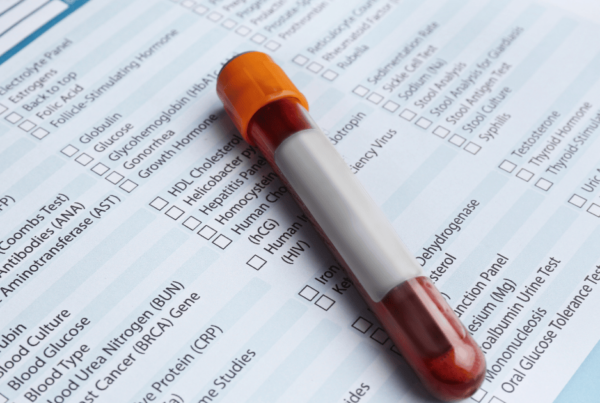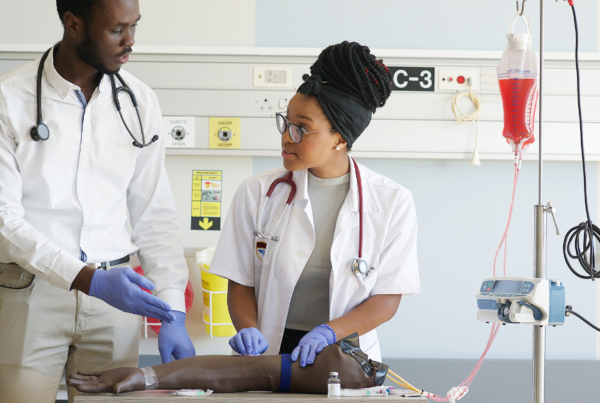In healthcare, mastering key skills is vital for all. This includes both seasoned pros and aspiring individuals. Among these crucial techniques, venipuncture stands out as a cornerstone procedure in phlebotomy. But what is venipuncture, exactly? This guide explores venipuncture. It covers its definition, steps, equipment, and sites. This resource aims to give students and medical professionals a full understanding. It will help them excel in this critical phlebotomy practice.
| Key Takeaways |
| Venipuncture is a key skill in phlebotomy. It involves extracting blood from a vein for various purposes. |
| It is vital for diagnosing medical conditions and monitoring blood. Blood levels stabilize, donations become effortless, and treatments proceed unhindered. It streamlines medical procedures, ensuring optimal care and efficiency. |
| The procedure has several steps. They are: proper hand hygiene, using a tourniquet, selecting a vein, inserting the needle, and collecting blood. |
| Healthcare professionals use standardized equipment to ensure safety and efficiency. This includes collection tubes, needles, and antiseptic wipes. |
| Phlebotomists usually target the inner elbow (antecubital fossa) for venipuncture. The preferred vein is the median cubital vein. |
| Proper training and certification are essential for anyone performing venipuncture. |
Understanding Venipuncture
Venipuncture, or phlebotomy, is the process of drawing blood from a vein, usually for lab tests. This procedure, commonly performed using a needle, is usually undertaken by a phlebotomist. Venipuncture is important for managing blood disorders, beyond its diagnostic value. This can involve removing excess red blood cells or administering medications intravenously.
Importance of Venipuncture
Venipuncture ranks among the most frequently performed invasive procedures in healthcare. Its importance is undeniable, serving a multitude of critical functions:
- Diagnostic Purposes: Blood tests from a vein are key in diagnosing many conditions.
- Monitoring Blood Components: Regular blood tests, done by venipuncture, check blood component levels. This ensures optimal health.
- Administering Treatments: Venipuncture allows for IV administration of medications, supplements, and chemotherapy.
- Some conditions, like hemochromatosis, need the removal of excess iron or blood. Healthcare providers perform this through venipuncture.
- Blood Donation: The main method for collecting blood donations is venipuncture. These donations save lives in surgeries and medical emergencies.
Steps for Successful Venipuncture
Executing venipuncture successfully necessitates following a series of meticulous steps. Phlebotomy programs usually provide detailed instruction on these steps. They often include hands-on training by experienced instructors. Here’s a breakdown of the key steps involved in the venipuncture process:
- Reviewing the Order of Draw: It is vital to know the order to fill blood collection tubes. This prevents contamination from the tubes’ additives.
- Gathering Supplies: We must ensure the supply tray and cart hold all necessary equipment.
- Patient Approach, Identification, and Preparation: Properly identify the patient. Explain the procedure. This is essential to gain their cooperation.
- Maintaining Hand Hygiene: Handwashing is paramount to preventing the spread of infections.
- Applying the tourniquet: A tourniquet is used on the patient’s arm. It makes the veins more prominent.
- Selecting a vein: It’s crucial to choose a suitable vein, typically in the antecubital fossa (inner elbow).
- Cleansing the Puncture Site: You must clean the puncture site with antiseptic wipes. Do it meticulously.
- Donning Gloves: Wearing clean gloves upholds sterility throughout the procedure.
- Reapplying the tourniquet: The tourniquet is reapplied after cleansing the puncture site.
- Vein anchoring: Proper anchoring of the vein prevents movement during needle insertion.
- Needle insertion: A steady hand is necessary for inserting the needle into the vein.
- Establishing Blood Flow: Once blood flow is established, the patient can open their fist, and the tourniquet is released.
- Filling Tubes: Blood collection tubes are filled in the correct order of draw. Then, mix them gently.
- Applying pressure and removing the needle: Gauze is placed over the puncture site, followed by needle removal. Applying pressure to the site stops any bleeding.
- Labeling Tubes: Ensuring all tubes are accurately labeled with patient information is essential.
- Checking the patient’s arm: The puncture site is inspected, and a bandage is applied if necessary.
- Proper Disposal: All used materials are disposed of according to regulations, and the area is cleaned.
- Hand hygiene: Gloves are removed, and hand hygiene protocols are followed.
- Thanking the Patient: It’s important to thank the patient and give post-procedure instructions.
- Specimen Transport: Blood specimens are securely transported to the laboratory for analysis.
Essential Venipuncture Equipment
Standardized equipment is used in venipuncture to ensure safety and efficiency. The following are some of the most regularly used items:
- Collection tubes: Different tube types are used depending on the required tests.
- Needles: Various needle sizes are available. The most common for venipuncture is the 21-gauge needle.
- Tourniquet: A tourniquet is used to make veins more visible and accessible.
- Wipes/Swabs: Antiseptic wipes or swabs are used to clean the puncture site.
- Gauze: Gauze is used to apply pressure to the puncture site after needle removal.
- Bandages: Bandages are applied to protect the puncture site after the procedure.
- Gloves: Gloves are mandatory for maintaining hygiene and preventing contamination.
- Disposal Unit: A sharps container is used to safely dispose of needles and other used equipment.
Common Venipuncture Sites
Phlebotomists typically target the antecubital fossa (the inner elbow) for venipuncture. Within this area, three primary veins are commonly accessed:
- Median Cubital Vein: This vein is the most preferred choice due to its size and ease of access.
- Cephalic Vein: Located on the thumb side of the arm, it is another common puncture site.
- Basilic Vein: Found on the little finger side of the arm, this vein is used if the other two are not suitable.
If the primary veins are inaccessible, phlebotomists may use alternative sites. These include the dorsal veins on the hand or, in rare cases, veins on the foot. Yet, these alternative sites can be more challenging and are generally used as a last resort.
Training and Certification in Venipuncture: 1 or 2-Day Phlebotomy Course in Texas
What is Venipuncture – Phlebotomy Now School in Dallas, Texas
Proper training is an absolute necessity for anyone aiming to perform venipuncture. At Phlebotomy Now School, we offer 1 or 2-day phlebotomy courses in Texas. They are intensive. They will teach students the skills needed for venipuncture. Our short training programs focus on hands-on practice. This ensures students are ready for real-world scenarios.
Why Choose Phlebotomy Now School for Your Venipuncture Training?
- Expert Instructors: Experienced professionals teach our courses. They provide personalized instruction and guidance. This ensures each student gets the attention needed to master venipuncture.
- Our curriculum covers all aspects of venipuncture. It includes both basic and advanced techniques. It ensures that students understand the procedure, even in a short time.
- Hands-On Training: We focus on practical experience. Students practice venipuncture under skilled instructors. This builds their confidence and skills.
- Certification: Students receive a certificate upon course completion. It validates their skills and boosts their employability in healthcare.
FAQs
What does venipuncture feel like?
A pinch or prick often accompanies the needle’s entry. The tourniquet’s grip can bring discomfort too, as it tightens around the arm. Fleeting yet typical, these sensations go with the process. Patients often experience them.
How long does venipuncture take?
The procedure spans a brief duration, factoring in vein accessibility.
Are there any risks associated with venipuncture?
Venipuncture is usually safe. It may cause minor side effects, like bruising, dizziness, or fainting. More serious complications are rare.
Who can perform venipuncture?
Only trained and certified healthcare professionals can perform venipuncture. This includes phlebotomists and registered nurses.
Conclusion
One must understand venipuncture and master its procedure. It’s key for anyone pursuing a career in phlebotomy or related fields. Venipuncture is a key skill. It is vital for tests, treatments, and patient care. Healthcare professionals complete this procedure with precision using the right tools and sites.
Phlebotomy Now School: Your Path to a Fulfilling Phlebotomy Career
At Phlebotomy Now School, we provide top-tier training. We aim to prepare our students for careers in healthcare.
We want them to be successful. If you’re considering a phlebotomy course, please contact us with questions. We’re here to help you turn your healthcare aspirations into reality.




